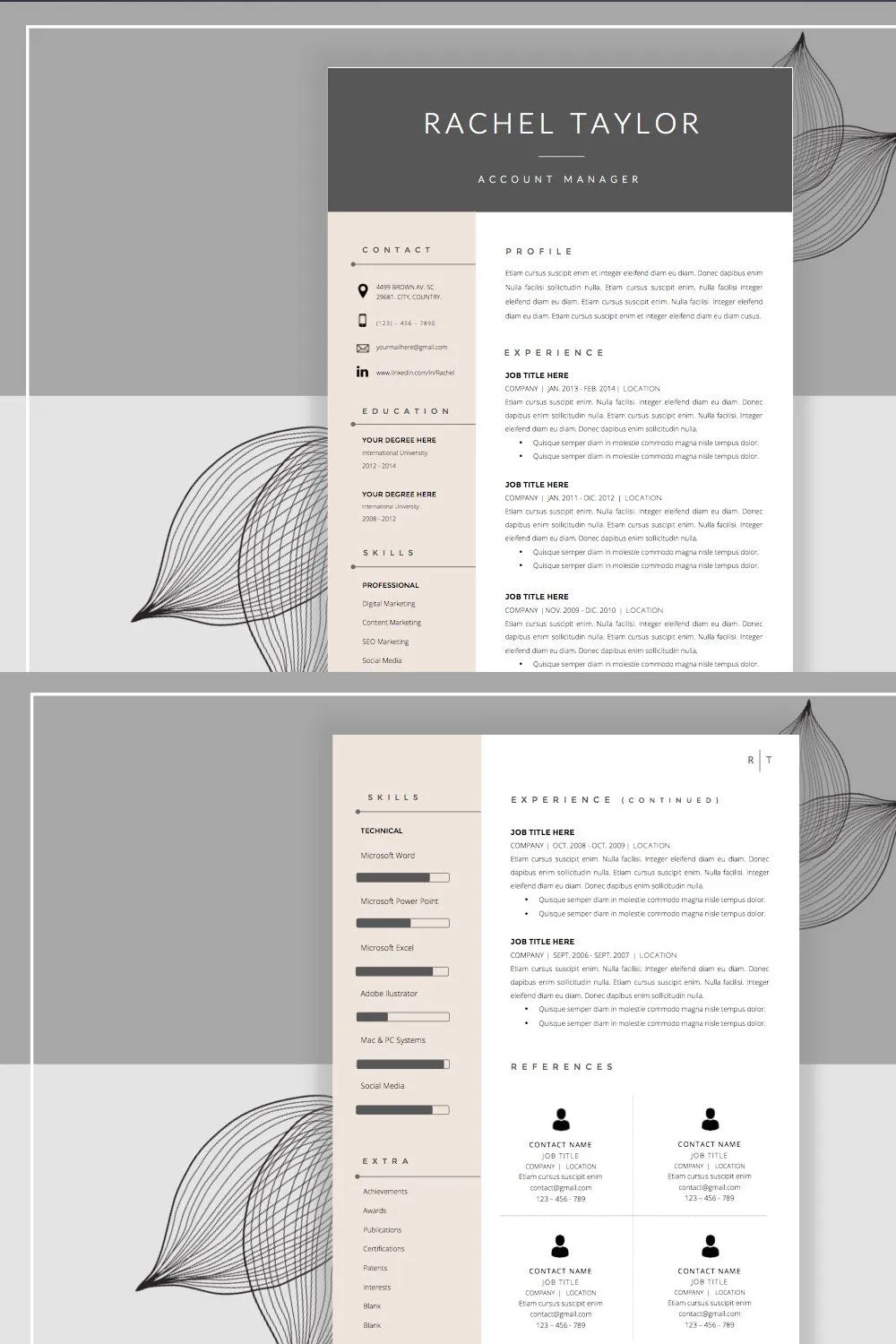What is a Resume Cover Letter
A resume cover letter is a crucial document that accompanies your resume when applying for a job. It serves as your introduction to the hiring manager and provides an opportunity to expand on the information presented in your resume. Unlike your resume, which offers a brief overview of your skills and experience, a cover letter allows you to communicate your personality, express your enthusiasm for the position, and demonstrate how your qualifications align with the job requirements. It’s a chance to make a strong first impression and persuade the employer that you are the ideal candidate. Understanding the purpose and structure of a cover letter is the first step in creating a compelling application.
Importance of Resume Cover Letters
In today’s competitive job market, a well-crafted cover letter can significantly increase your chances of landing an interview. It provides context to your resume and allows you to highlight specific skills and experiences that are most relevant to the job you are applying for. A cover letter demonstrates your communication skills, attention to detail, and genuine interest in the role and the company. It helps you stand out from other applicants by showcasing your personality, expressing your enthusiasm, and explaining why you are a perfect fit. Many employers consider a cover letter essential and may not even review resumes that are submitted without one, making it a critical component of any job application strategy.
Key Components of a Cover Letter
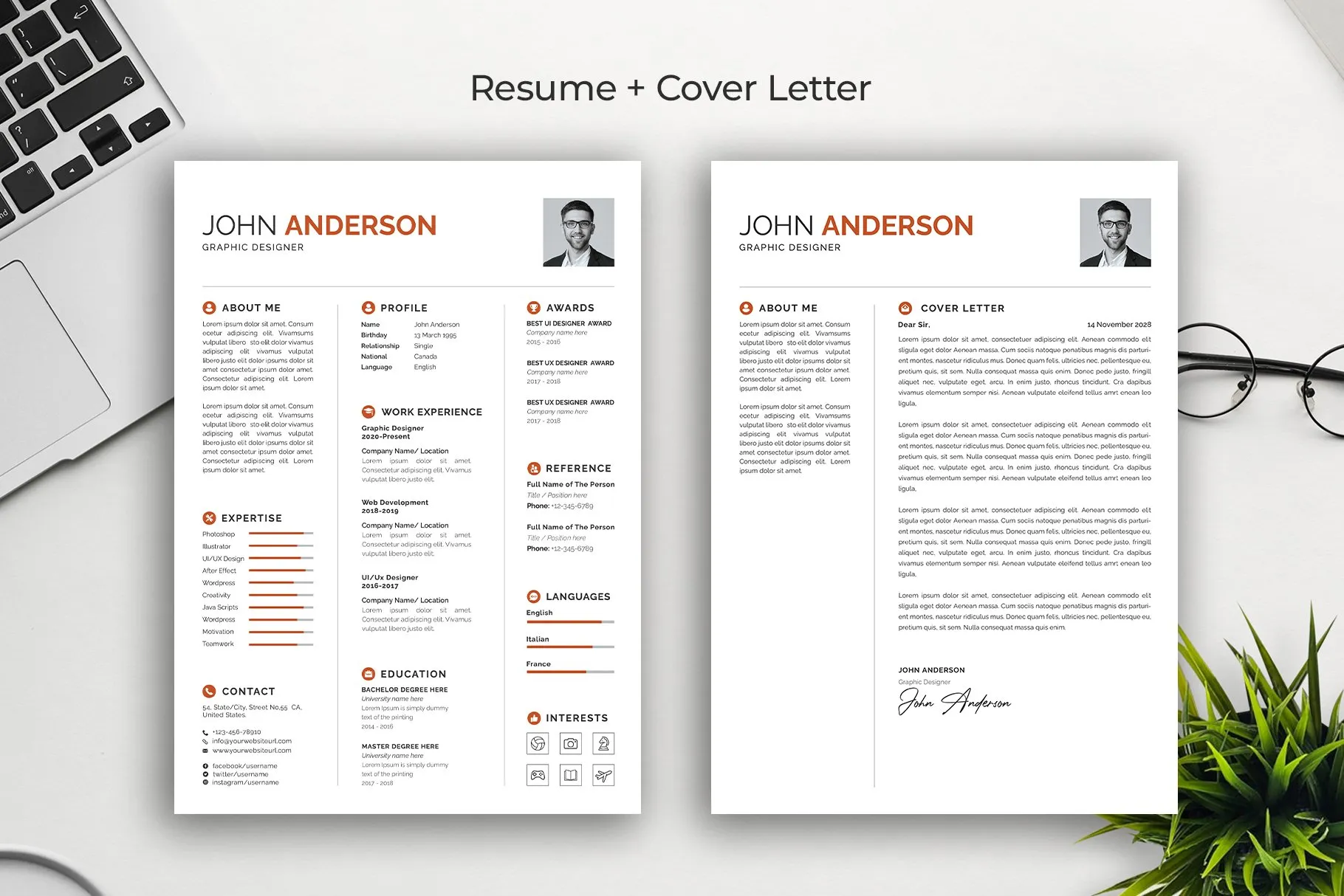
A well-structured cover letter follows a standard format that includes several key components. These elements work together to create a cohesive and persuasive narrative that grabs the reader’s attention and effectively communicates your qualifications. Knowing the essential parts is key for your cover letter.
Header Information
The header includes your contact details and the date. This section is usually located at the top of the letter and ensures the recipient knows how to contact you. Always ensure that your contact details are correct and up-to-date. It is the beginning of your cover letter.
Applicant’s Contact Details
Include your full name, phone number, email address, and optionally, your LinkedIn profile URL or personal website. Make sure this information is easy to read and clearly presented. Double-check that the contact information is accurate to prevent any missed opportunities.
Date
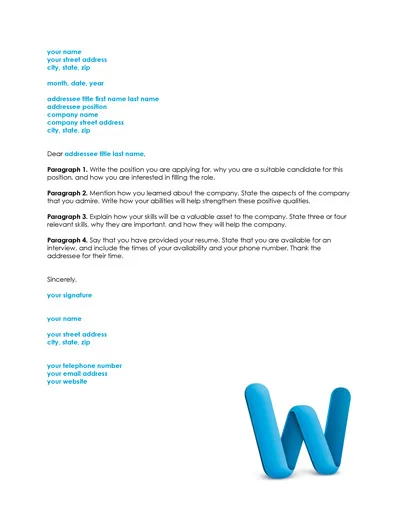
Include the current date, formatted correctly. This helps the employer know when the letter was written. It also helps with the organization of their records and is a standard practice in professional correspondence.
Hiring Manager’s Contact Details
If possible, address the cover letter to a specific person (the hiring manager or the recruiter). Researching the company’s website or LinkedIn can help you find this information. Addressing the letter to a specific individual demonstrates that you have taken the time to research the company and shows you are serious about the position. If you are unable to find a specific name, use a professional salutation like “Dear Hiring Manager.”
Greeting and Salutation
Use a professional greeting. “Dear Mr./Ms./Mx. [Last Name]” is always a good choice. Avoid generic greetings like “To Whom It May Concern.” If you don’t know the name, “Dear Hiring Manager” is acceptable. A proper salutation sets the tone for the rest of the letter and shows respect.
Body Paragraphs
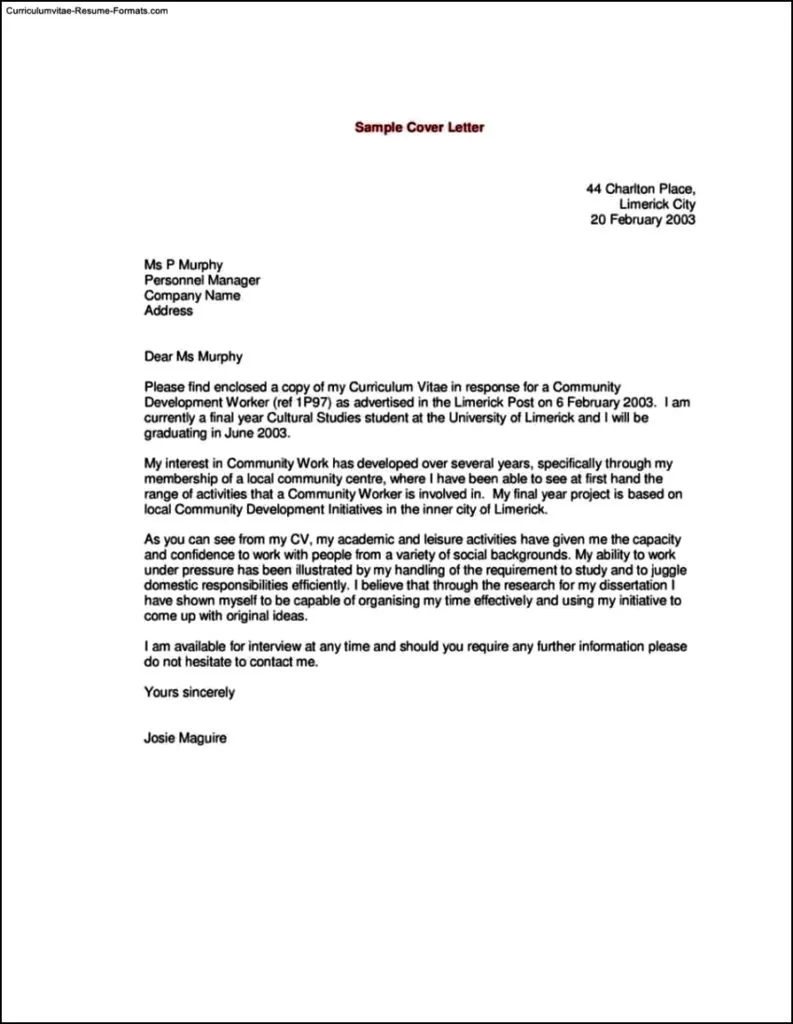
The body paragraphs are the heart of your cover letter. This section should be concise, well-written, and tailored to the specific job and company. It is where you express your enthusiasm and connect your skills and experiences to the job requirements.
First Paragraph State Your Intent
In the first paragraph, state the specific position you are applying for and where you found the job posting. Briefly mention why you are interested in the role and the company. This paragraph immediately establishes your purpose and sets the stage for the rest of your letter.
Second Paragraph Showcase Your Skills
In the second paragraph, highlight your relevant skills and experiences. Provide specific examples of how you have used these skills in the past and the results you achieved. Use the job description as a guide to identify the key requirements and tailor your examples to match them. Quantify your achievements whenever possible. This paragraph is the core of your application, connecting your qualifications to the role’s needs.
Third Paragraph Express Your Enthusiasm
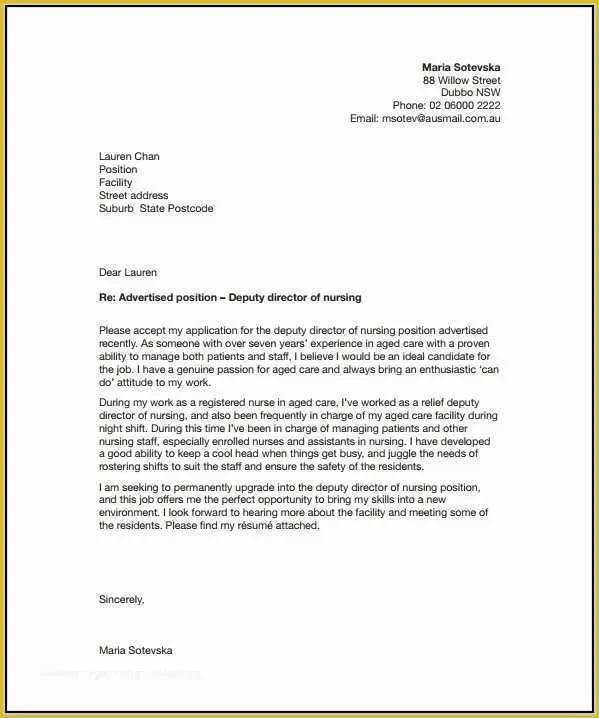
In the third paragraph, express your enthusiasm for the company and the role. Explain why you are interested in working for them and what you admire about their work. Show that you have done your research and understand their mission, values, or recent achievements. This paragraph shows you are truly interested.
Closing and Call to Action
Close your cover letter with a strong call to action. Thank the hiring manager for their time and consideration. Express your eagerness to discuss your qualifications further in an interview. Reiterate your contact information, making it easy for the hiring manager to reach you. This final touch reinforces your interest and encourages the next step.
Formatting and Design
The format and design of your cover letter are crucial for making a positive first impression. A well-designed cover letter is easy to read, visually appealing, and professional. Proper formatting ensures your message is clear and that your qualifications are presented in an organized manner. It also reflects your attention to detail and professionalism.
Choosing the Right Template
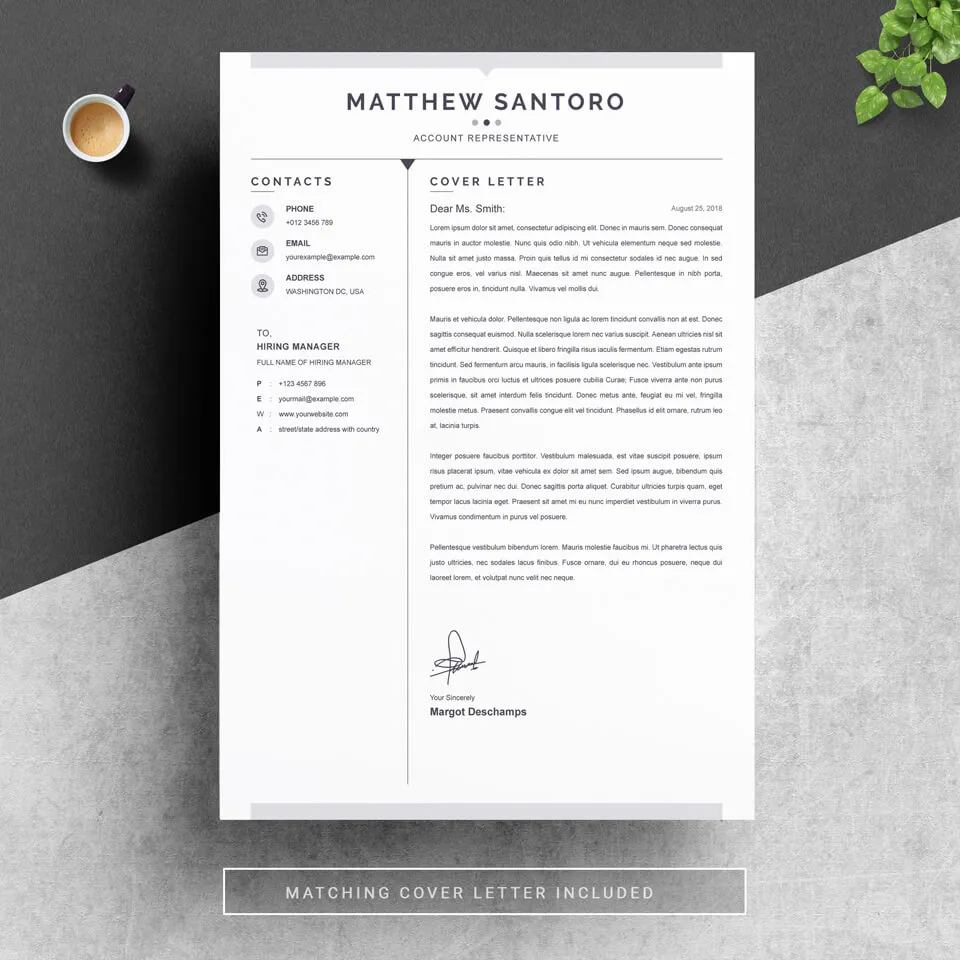
Select a template that is clean, modern, and professional. Many free and premium templates are available online. Choose a template that matches the tone and style of the job you are applying for. Make sure the template is easy to customize and allows you to highlight your skills effectively. Consider the layout and ensure it complements the content of your letter. Your chosen template should align with the company’s brand.
Creating a Professional Layout
Use a standard font, such as Arial, Times New Roman, or Calibri, with a font size between 10 and 12 points. Use single spacing with a space between each paragraph. Set consistent margins (1 inch is standard). Ensure that your letter is visually balanced and easy to read. Break up large blocks of text with subheadings and bullet points to enhance readability. Proofread the layout to make sure it’s clean and well-organized.
Essential Tips for Writing a Cover Letter
Writing an effective cover letter involves more than just filling in a template. It requires careful consideration of your target audience, the job requirements, and your unique qualifications. Several key strategies can help you write a cover letter that stands out and grabs the attention of hiring managers.
Tailoring Your Cover Letter
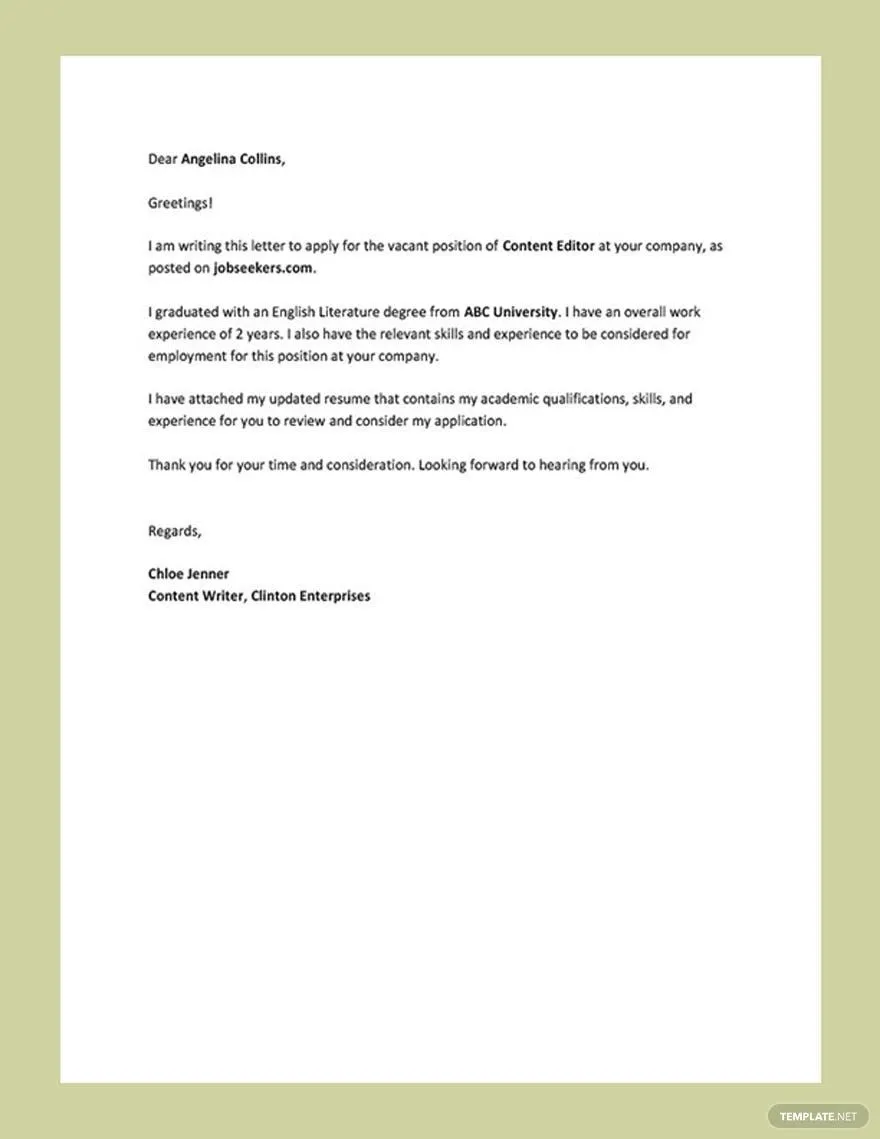
Customize each cover letter for the specific job you are applying for. Read the job description carefully and identify the key skills and experiences the employer is looking for. Highlight how your qualifications match these requirements and provide specific examples of your achievements. Generic cover letters are easily recognizable and often discarded. Always tailor your cover letter to show the reader that you are a good fit.
Proofreading and Editing
Proofread your cover letter carefully for any errors in grammar, spelling, and punctuation. Use a spell checker and grammar checker, but also read the letter aloud to catch any mistakes you might miss. Ask a friend or family member to review your cover letter for a fresh perspective. Ensure the tone and style of your letter are professional and polished. Correcting errors is a step that’s essential for demonstrating your attention to detail.
Template Examples for Specific Industries
Different industries may require different approaches to cover letter writing. Using industry-specific templates can help you tailor your letter to the expectations and nuances of that field. These templates usually highlight specific skills and experiences relevant to that field. Below are template examples tailored to specific industries.
Template Examples for Entry-Level Positions
Focus on highlighting your academic achievements, internships, volunteer experience, and any relevant coursework. Emphasize your eagerness to learn and your enthusiasm for the industry. Show how your skills and experiences align with the job description. Keep your letter concise and professional, providing clear examples of your potential. Consider a template that emphasizes accomplishments.
Template Examples for Experienced Professionals
Showcase your professional accomplishments and highlight your key skills. Provide data-driven results to demonstrate the impact you have made in previous roles. Tailor your letter to the job description, using industry-specific language and keywords. Mention your career progression and your interest in the new company. Consider a template that clearly presents your expertise.
Template Examples for Creative Roles
Consider a more visually appealing template that reflects your creativity. Use a layout that is well-designed and showcases your aesthetic sense. Highlight your portfolio and provide links to your work. Focus on your design skills, experience, and creative process. Show how your unique skills make you a good fit for the role.
Template Examples for Technical Roles
Use a clean, structured template that is easy to read. Highlight your technical skills and certifications. Provide examples of projects you have worked on and the impact you achieved. Focus on your experience with specific technologies and tools. Be detailed and concise, demonstrating your understanding of the job requirements.
Template Examples for Remote Positions
Emphasize your ability to work independently and manage your time effectively. Highlight your experience with remote work tools and communication platforms. Show your adaptability and willingness to collaborate remotely. Include any remote work certifications or experience to demonstrate your suitability for a remote position.
Common Mistakes to Avoid
Certain common mistakes can significantly undermine the effectiveness of your cover letter. These mistakes can damage your professional image, and reduce your chances of landing an interview. By avoiding these pitfalls, you can ensure that your cover letter presents you in the best possible light and increases your prospects.
Overuse of Clichés
Avoid using overused phrases and clichés, such as “I am a team player” or “I am a highly motivated individual.” These phrases are generic and don’t convey much information about your skills or personality. Instead, use specific examples to showcase your abilities. Replace clichés with compelling descriptions of your skills and experiences.
Typos and Grammatical Errors
Typos and grammatical errors can damage your credibility. They demonstrate a lack of attention to detail and can create a negative impression. Carefully proofread your cover letter for any mistakes before submitting it. Use a spell checker and grammar checker, but don’t rely on them entirely. Read the letter aloud to catch any errors you might miss.
Generic Content
Avoid using a generic cover letter that could be sent to any company or position. Tailor your letter to each job application. Explain why you are interested in the specific role and the company, and highlight how your skills match the job requirements. Show that you have done your research and understand the company’s needs. Customize the examples to reflect the role.
Ignoring the Job Description
Make sure your cover letter addresses the specific requirements outlined in the job description. Use the job description as a guide to identify the key skills and experiences the employer is looking for. Highlight how your qualifications align with these requirements and provide specific examples of your achievements. Failing to address the job description means you’ve likely missed the mark.
How to Get Started Using Templates
Using a cover letter template can save you time and ensure that your letter has a professional structure. These steps will help you start using templates effectively.
Where to Find Free Templates
Numerous websites offer free cover letter templates. Websites like Microsoft, Google Docs, and other career-focused platforms provide a variety of templates that you can download and customize. You can search online for “free cover letter templates” to find a wide range of options. Ensure the templates are in a format that you can easily edit and that the design is suitable for the jobs you are applying for.
Customizing Templates
Once you’ve chosen a template, customize it to reflect your unique skills, experience, and the specific requirements of the job. Replace the placeholder text with your own information, including your contact details, the hiring manager’s name (if known), and the job title. Tailor the content to match the job description and highlight your relevant qualifications. Review the template to ensure the formatting and layout are professional and easy to read.
Best Practices for Saving and Submitting
Following best practices for saving and submitting your cover letter ensures that it arrives in the correct format and is easily accessible by the hiring manager. Here’s what you need to do.
Review and Revision
After customizing your template, review and revise your cover letter to ensure it is free of errors and clearly communicates your message. Carefully proofread for grammar, spelling, and punctuation errors. Ensure the tone and style are professional and that the content is tailored to the specific job. Consider asking a trusted friend or colleague to review the letter for feedback.
Seeking Feedback
Before submitting your cover letter, seek feedback from a career counselor, a trusted mentor, or a friend who has experience with job applications. Ask for their thoughts on the content, formatting, and overall presentation. Use their feedback to make any necessary revisions and refine your cover letter. Getting a second opinion can help you catch any errors or weaknesses that you might have missed.
Conclusion
Resume cover letter templates offer a valuable starting point for crafting compelling job applications. By understanding the essential components, formatting guidelines, and best practices, you can use these templates to create cover letters that capture attention and showcase your qualifications effectively. Remember to tailor each cover letter to the specific job and company, highlight your relevant skills and experiences, and always proofread carefully before submitting. With a well-written cover letter, you can significantly increase your chances of landing an interview and securing your dream job. Take the time to learn about cover letter templates and create your best application.
